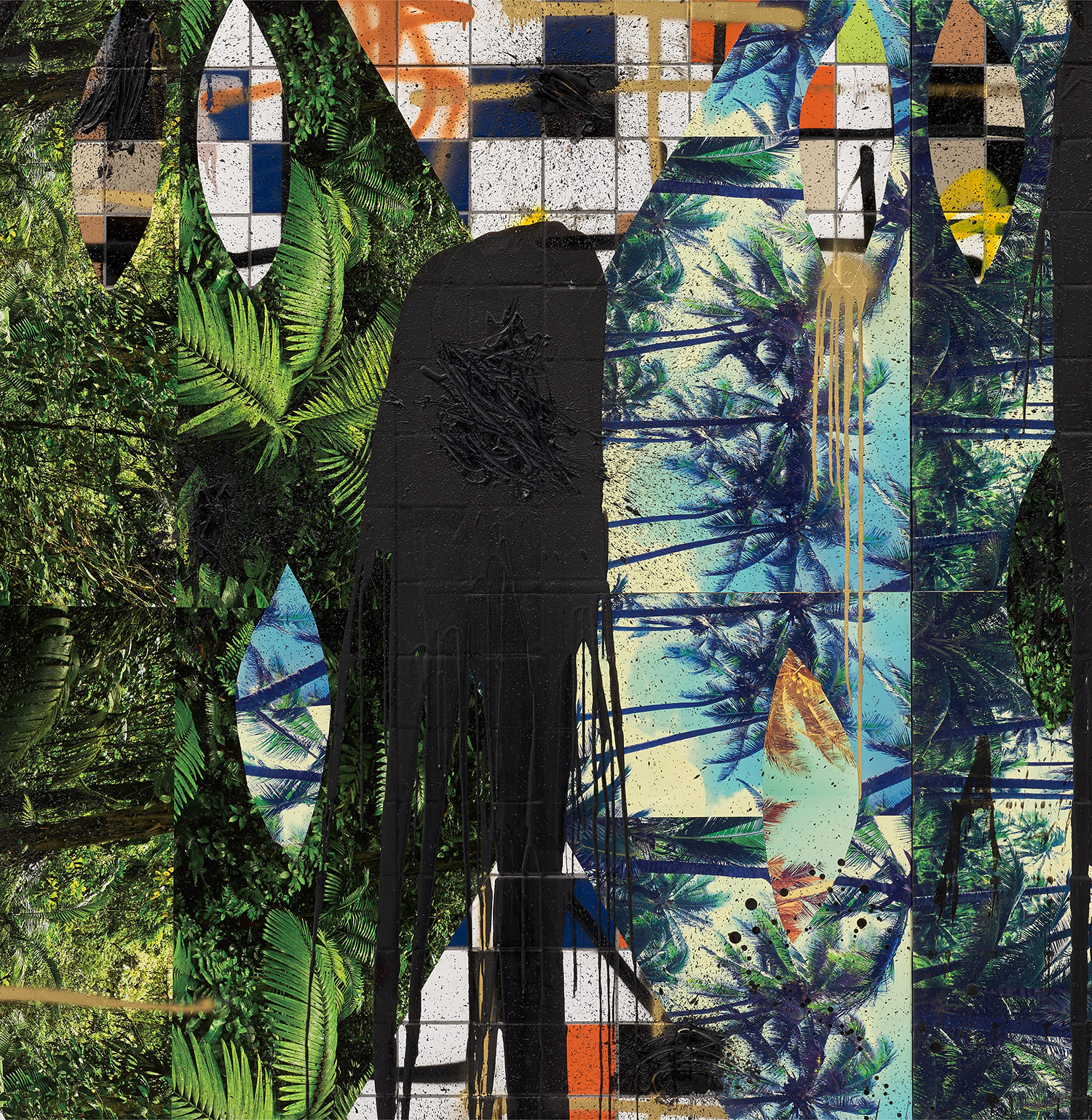





Property of a Private Collector
16
Rashid Johnson
Untitled Escape Collage
signed "Rashid Johnson" on the reverse of the left panel
ceramic tile, black soap, wax, vinyl and spray enamel, in 2 parts
95 3/4 x 142 1/2 in. (243.2 x 362 cm)
Executed in 2016.